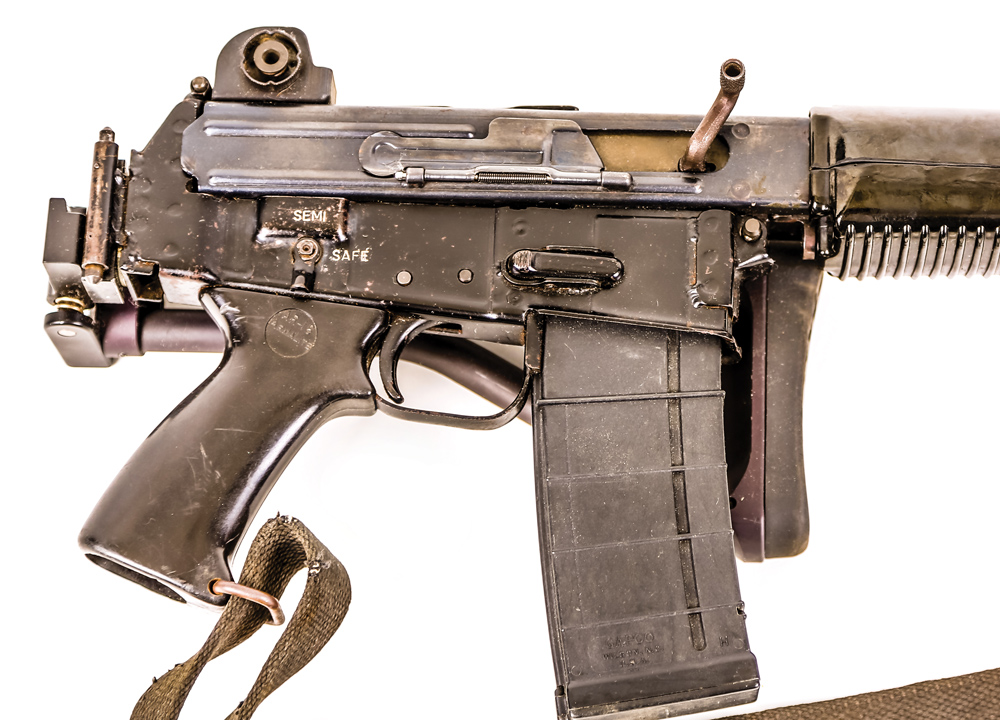I warned you didn’t I? Grumpy
Month: February 2021
Have a Great Day on me!

To help pass the day -NSFW
I gave my Late Mom one of these and she just loved it. Now it belongs to my Lovely Daughter in Law. Hopefully one of these days, she can get over her and put it thru its paces. (The Kid by the way is one Hell of a good shot too!)
Grumpy
One of the nice things about this piece is the rear marker that tells you of the gun is cocked or not. Something that I call a mighty useful thing to have. Especially when you are teaching a Rookie how to shoot properly.

This resulted in a criticism of the design for its cheaper and some might say more flimsy construction, yet that was a part of the design philosophy for the AR-18 for its intended market of foreign military sales, make it cheaper. The action, charging handle, gas system and overall layout of the AR-18 was far more simplistic and conventional compared to the space-age design of the other ArmaLite projects.

As mentioned earlier the AR-18 utilizes a short-stroke-gas-piston design borrowed from the earlier ArmaLite AR-16, along with its bolt-carrier and action spring layout. Instead of gas feeding into the bolt-carrier from a gas tube to push the bolt into the unlocked position and drive the carrier rearward as is the case of the AR-15 design, the AR-18 used a gas cup just behind the gas block under the handguard to capture the expanding gas and drive rearward. As the cup drives rearward it pushes a rod connected behind it which in turn pushes a short distance on the bolt-carrier with enough force to both unlock the bolt and drive the carrier the full length of travel backward.
Instead of a buffer tube, buffer spring and buffer used by the AR-15, the AR-18 uses two small action springs on guide rods to buffer the bolt carrier and drive it back forward. This more compact layout negated the need for a buffer tube like the AR-15 and allowed the AR-18 to have a folding stock. The AR-18 also did not use a rounded internal receiver wall with large surface area in contact with the carrier to contain its travel like the AR-15, but rather the guide rods and a small track in the receiver guide the carrier. This resulted in much larger clearances between the receiver and the carrier, and thus a greater tolerance for the buildup of grime and carbon without causing issues as might be the case with the AR-15. Most importantly for the firm, the new design did not infringe on the AR-15 patent.

The AR-18 was tested later in the 1960s by the U.S. Military, begrudgingly, to analyze its potential as a military arm. In the tests, the military found that the high cyclic-rate of 800 R.P.M. could at times outrun the magazines ability to feed rounds, resulting in stoppages.
The AR-18 did see some limited use and success as an export arm to smaller foreign nations like Botswana and Haiti. Some of its most infamous use was in the hands of the Provisional Irish Republican Army during “The Troubles” in Northern Ireland.

The AR-18 also had a semi-automatic version, called the AR-180, that was produced up to the late 1980s alongside the AR-18 by a few companies including Japan’s Howa Machinery Company and Britain’s Sterling Armaments Company. However the select-fire and semi-automatic versions of the design never really took off, and their limited production eventually ceased.
The design features of the AR-18 did carry on and inspire future arms developments like the SA80, SAR-80, H&K G36, Sig Sauer MCX, and the Howa Type 89 service rifle that is still being used by the Japanese Self Defense Force today. Brownells even recently released AR-15-compatible upper receiver groups called the BRN-180 series that copies the gas-system, bolt-carrier and charging-handle found on the AR-18. Despite its short-lived military trials and production history, the simple ArmaLite AR-18 clearly had good traits that live on in modern designs today.



